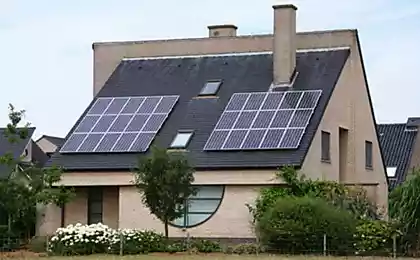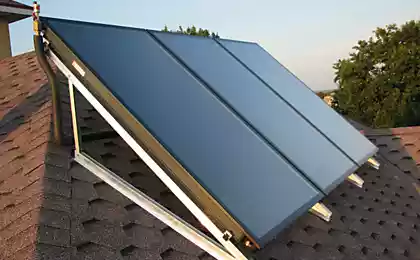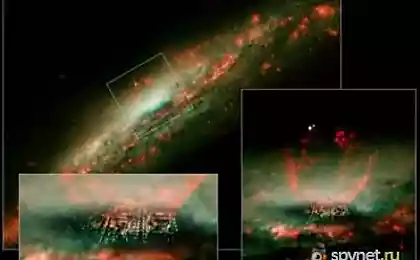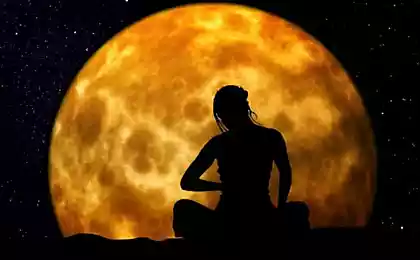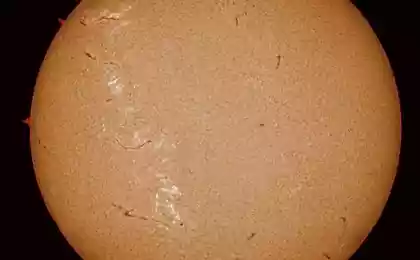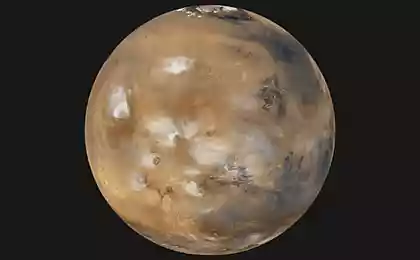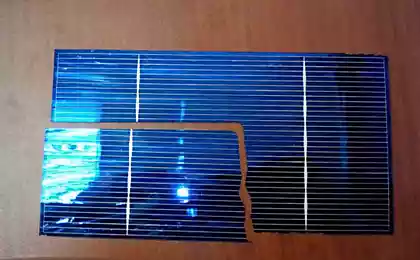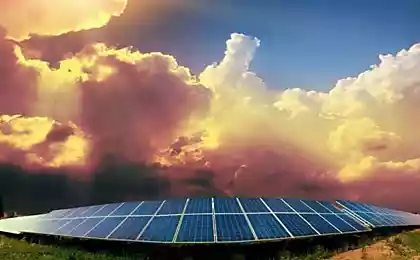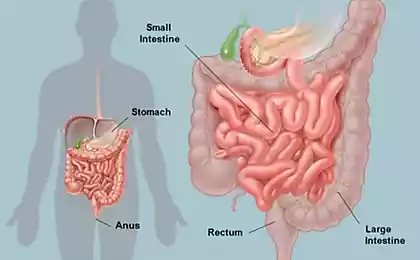1052
The Solar System (35 photos)
Every minute of robotic probes NASA, the European Space Agency and others. Collect information for us from all over the solar system. Now ships supervise the orbit of the Sun, Mercury, Venus, Earth, Mars and Saturn; several more are on the way to small bodies, and several - at the outlet of the solar system. Mars rover named "Spirit" was officially pronounced dead after two years of silence, but his double «Opportunity» continues its mission, after spending days on the planet in 2500 instead of the planned 90.
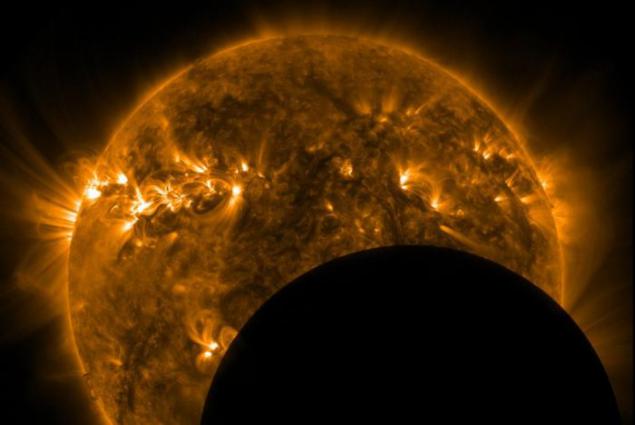
Solar Dynamics Observatory, NASA took this picture of the moon, the sun passing by May 3rd. (NASA / GSFC / SDO)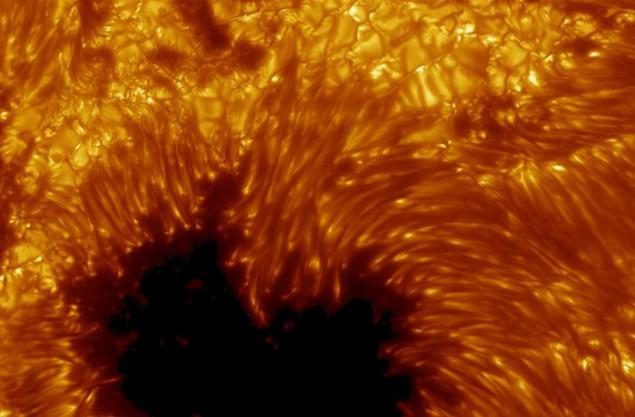
Detailed view of the surface of the sun. Part of a large spot in the active region 10030 imprinted July 15, 2002 by a Swedish Telescope in La Palma. The width of the cells at the top of the picture - about a thousand kilometers. The central part of the spot (umbra) dark because the strong magnetic fields here stop the rise of the hot gas inside. Filamentous education around umber up penumbra. Dark nucleus are clearly visible in some bright fibers. (Royal Swedish Academy of Sciences)
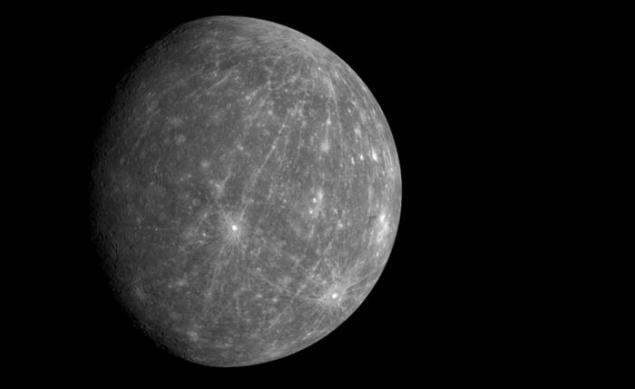
October 6, 2008 the spacecraft NASA «MESSENGER» successfully completed its second flight around Mercury. The next day, pictures taken during the flight, came to Earth. This amazing photo was the first, it was made 90 minutes after the ship crept to the planet in the near distance. Bright crater south of the center - Kuiper present in the photographs station «Mariner 10" in the 1970s. (NASA / Johns Hopkins University Applied Physics Laboratory / Carnegie Institution of Washington)
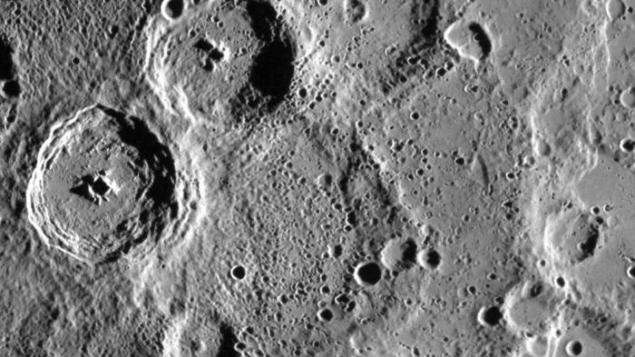
Mosaic Spitteler craters on Mercury and Hallberg on 30 March. (NASA / Johns Hopkins University Applied Physics Laboratory / Carnegie Institution of Washington)

South Pole and the boundary of light and shadow on Mercury with a height of 10 240 km. The surface temperature at the top of the image, bask in the sun, about 430 degrees Celsius. At the bottom of the dark parts of the picture the temperature drops rapidly to 163 degrees, and some parts of the world the sun's rays do not fall ever, so that the temperature is kept there to -90 degrees. (NASA / Johns Hopkins University Applied Physics Laboratory / Carnegie Institution of Washington)
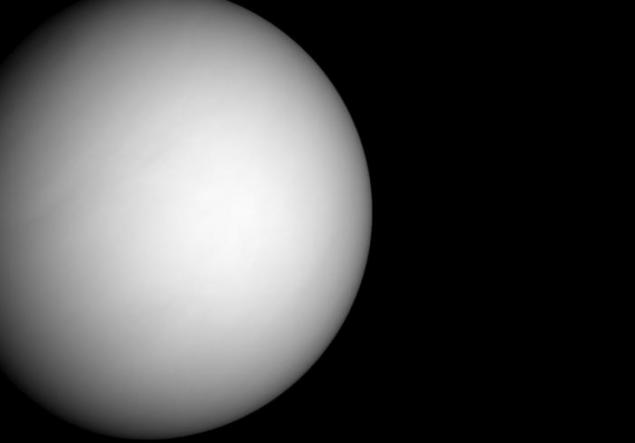
The second planet from the Sun, Venus. The picture taken on June 5, 2007. Thick clouds of sulfuric acid fouled surface of the planet by reflecting sunlight into space, but retaining the warmth of 460 ° C. (NASA / Johns Hopkins University Applied Physics Laboratory / Carnegie Institution of Washington)
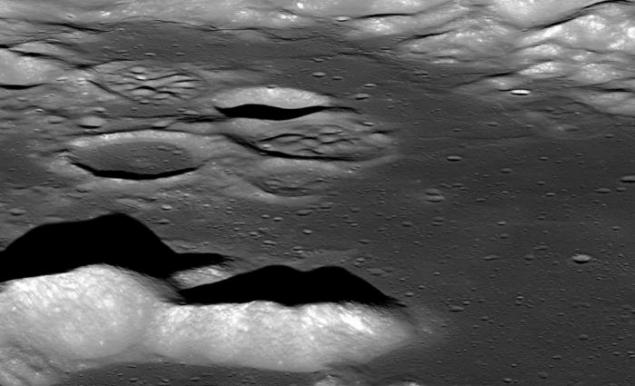
This picture was taken Lunokhod NASA crater Aitken, including its central peak and the northern wall. The width of the surface of the picture - about 30 kilometers. (NASA / GSFC / Arizona State University)
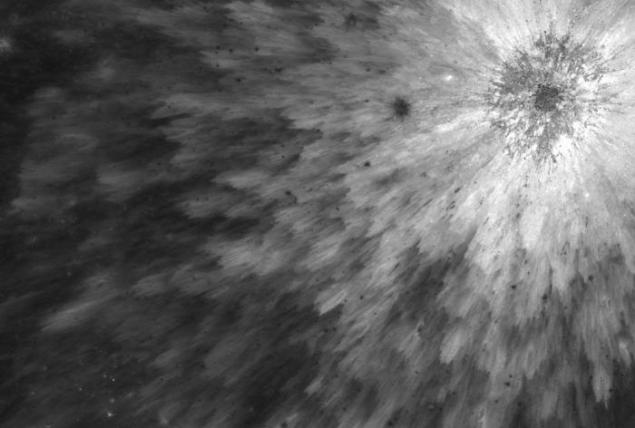
Flex zakraternyh emissions unnamed crater radius of 1 km on the moon. (NASA / GSFC / Arizona State University)

Landing ship "Apollo 14". Traces left by NASA astronauts 5 and 6 February 1971 are still visible. (NASA / GSFC / Arizona State University)
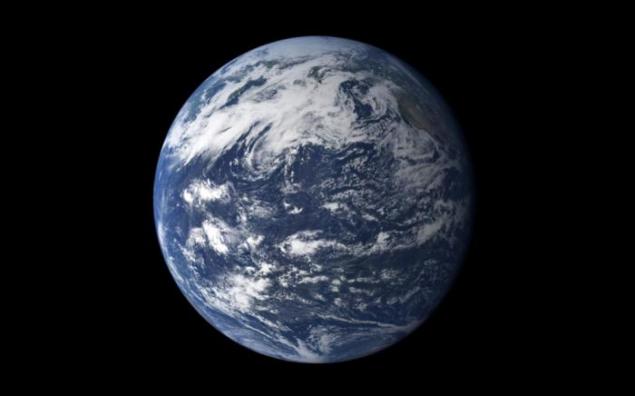
This detailed view of our planet was created mainly from observations of Terra satellite. The picture is focused on the Pacific Ocean, an important part of the water system, which occupies 75% of the surface of our planet. (NASA / Robert Simmon and Marit Jentoft-Nilsen, based on MODIS data)
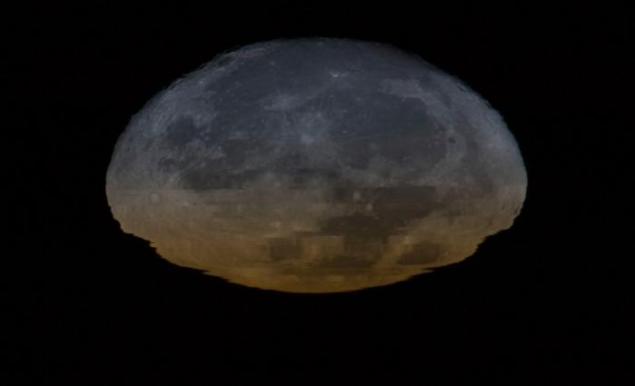
The image of the moon, curved layers of the atmosphere. Picture taken by astronauts on the ISS over the Indian Ocean on April 17. (NASA)
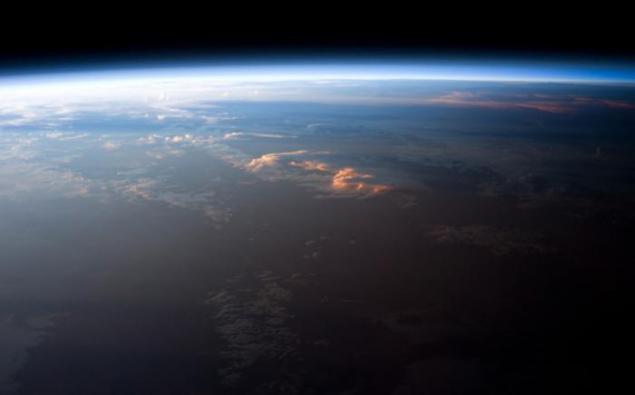
Panorama of the central part of South America. (NASA)
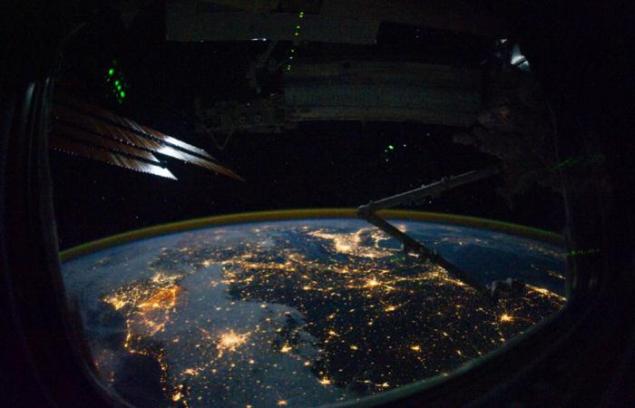
October 28, 2010, astronauts on the ISS took this picture of the Earth with night brightly lit Brussels, Paris and Milan. (NASA)

Snowfall over 30 US states in February last year - from the Great Plains to New England. (NOAA / NASA GOES Project)

The first quarter of the moon and the northern lights above the Earth September 14, 2010. (NASA)
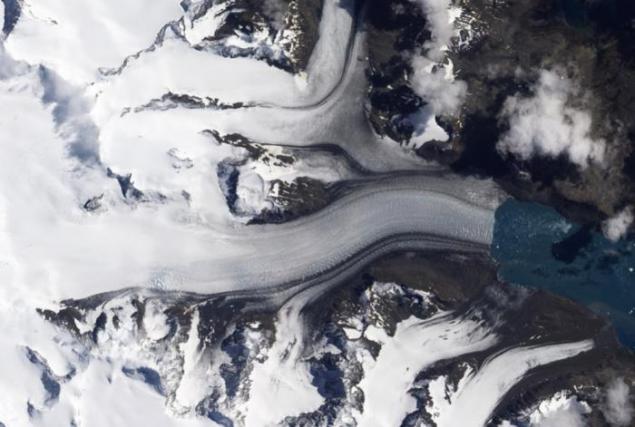
South Georgia - an arched island, which lies 2,000 kilometers to the east of the southern end of South America. Along the east coast of the continent Neumayer Glacier snake stretches to the ocean. Picture taken January 4, 2009. (NASA EO-1 team)

This photograph was taken by James Spann Poker Flats, Alaska, where he arrived at a scientific conference on the study of the aurora borealis, March 1. (NASA / GSFC / James Spann)
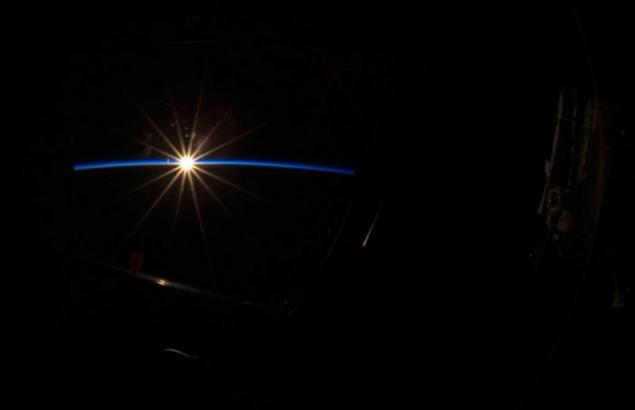
ISS astronauts so greet the dawn. (NASA)
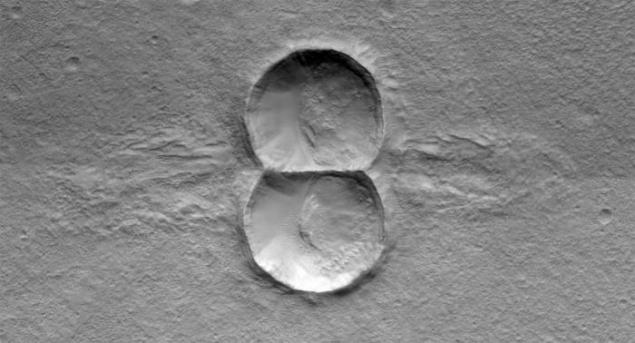
Amazing double crater with a common boundary sediments and lava. Apparently, these two craters were formed at the same time. The photo was taken on Mars using the camera on the rover in February this year. (NASA / JPL / University of Arizona)
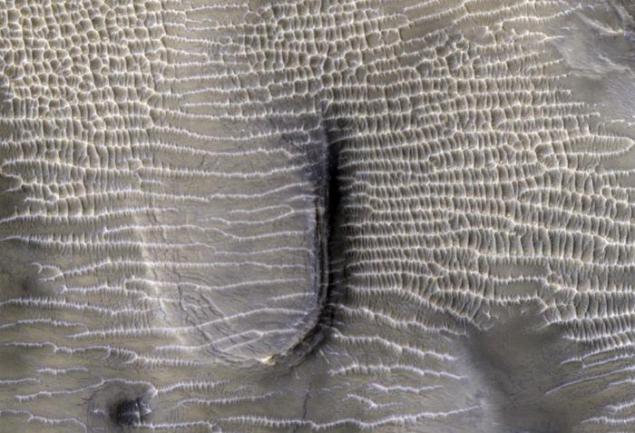
Education in the sand on the surface of Mars crater Sinus Sabeus. Picture taken on April 1st. (NASA / JPL / University of Arizona)
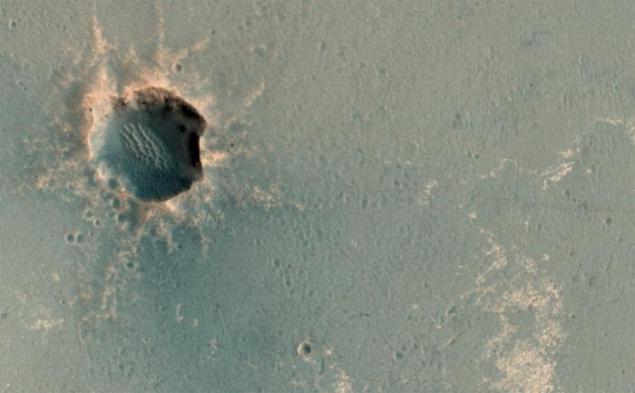
This picture was taken the camera rover «Opportunity», «seated on the threshold" on the edge of the crater of Santa Maria (a dark spot at the top left). Traces «Opportunity», leading to the right, you can see in the center. The photo was taken on March 1 after «Opportunity» few days exploring the area. (NASA / JPL / University of Arizona)
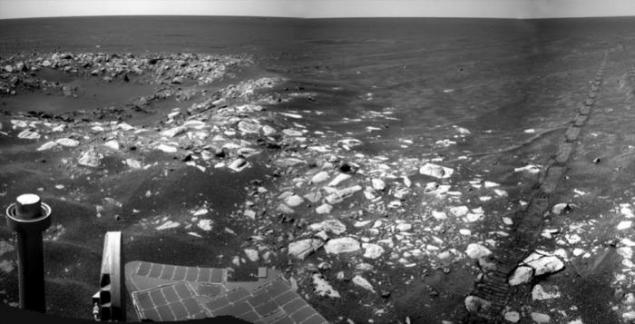
Rover «Opportunity» «looks" on the surface of Mars. Somewhere in the distance you can see a small crater. (NASA / JPL)
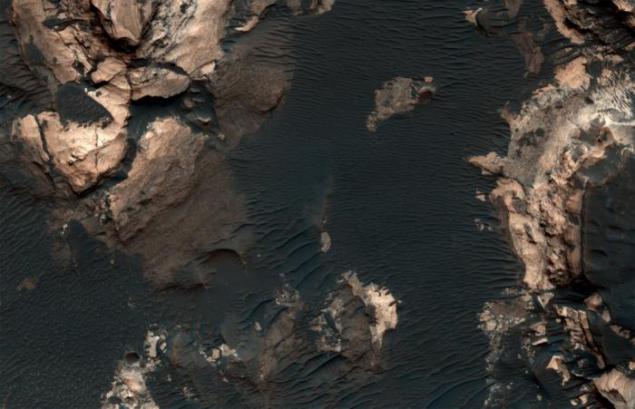
Holden crater area - one of the four candidates for the landing of the rover «Curiosity», January 4, 2011. NASA still mulling landing their next Mars rover, scheduled for November 25. Mars rover to land on Mars August 6, 2012. (NASA / JPL / University of Arizona)
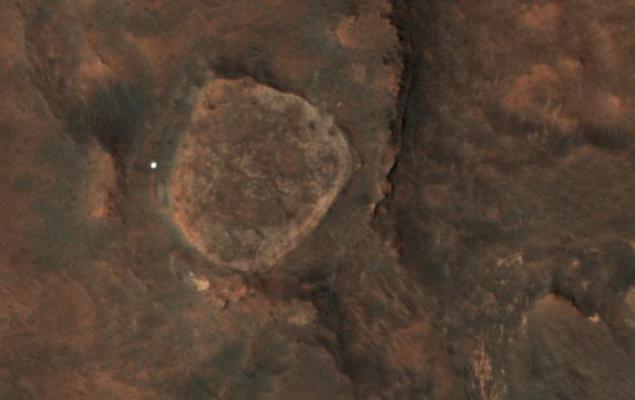
Rover "Spirit" in the place where he was seen for the last time. He got stuck in the sand in the sun. For the past year, his radio stopped working, and last Wednesday NASA engineers sent the last signal, hoping to get an answer. They did not get it. (NASA / JPL / University of Arizona)
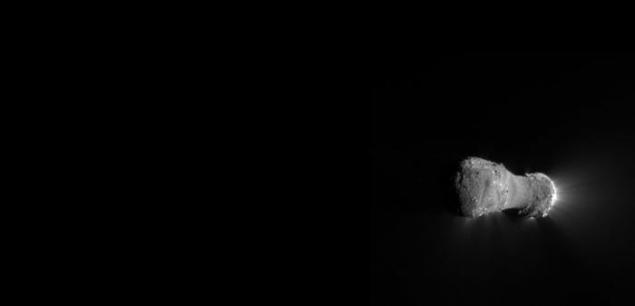
Hartley November 24, 2010. (NASA / JPL-Caltech / UMD)
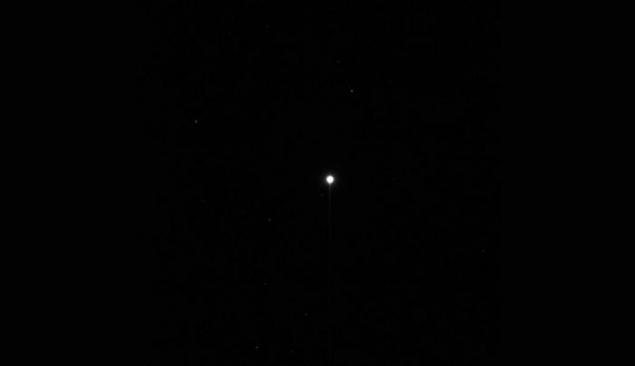
First, the raw asteroid Vesta shot, make the ship NASA «Dawn». The picture was taken on May 3 at a distance of about 1 million miles. Vesta in white glow in the center of the image. Huge asteroid reflects so much sun that its size seems much more. Vesta is 530 km in diameter, it is the second most massive object in the asteroid belt. Approximation of the ship to the asteroid is expected July 16, 2011. (NASA / JPL)
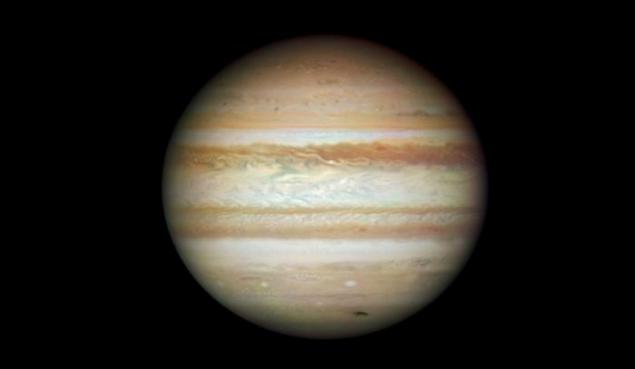
Picture of Jupiter, made a telescope "Hubble" July 23, 2009, after an asteroid or comet entered the planet's atmosphere and disintegrated. (NASA, ESA, Space Telescope Science Institute, Jupiter Impact Team)
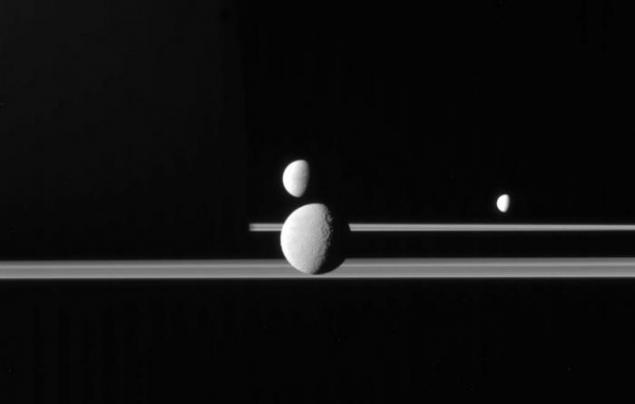
Image of Saturn made "Cassini" on 25 April. On it you can see a number of satellites along the rings. (NASA / JPL / Space Science Institute)
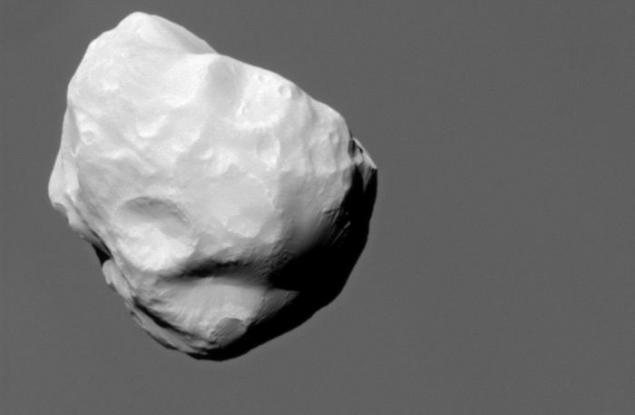
Detailed view of the small moon of Saturn Helen during flight "Cassini" past the planet on May 3. The atmosphere of Saturn occupies the background image. (NASA / JPL / Space Science Institute)
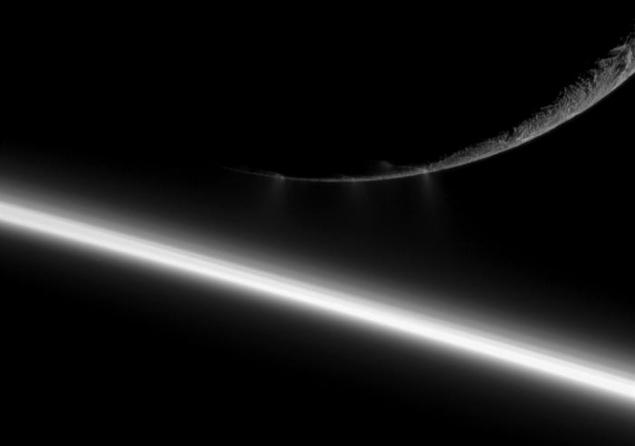
Ice particles ejected from the cracks in the south of Saturn's moon Enceladus August 13, 2010. (NASA / JPL / Space Science Institute)
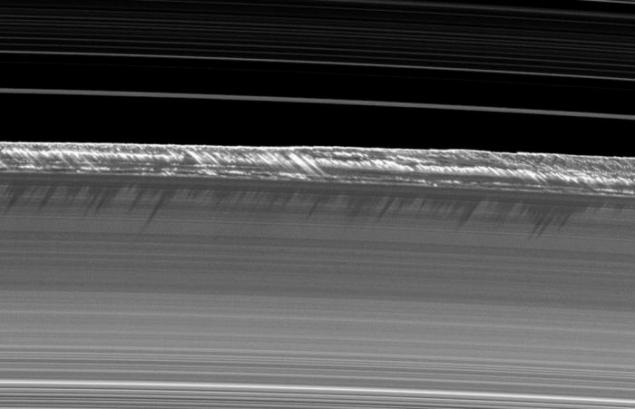
Vertical formation on the main rings of Saturn rise sharply from the edge of the ring, casting long shadows on the ring. Picture taken ship "Cassini" two weeks before the equinox in August 2009. (NASA / JPL / Space Science Institute)
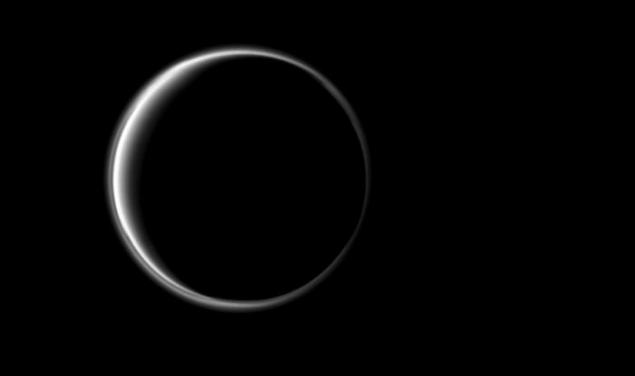
"Cassini" looks at the dark side of Saturn's largest moon. Oreolopodobnoe ring is formed by sunlight on the periphery of Titan's atmosphere. (NASA / JPL / Space Science Institute)
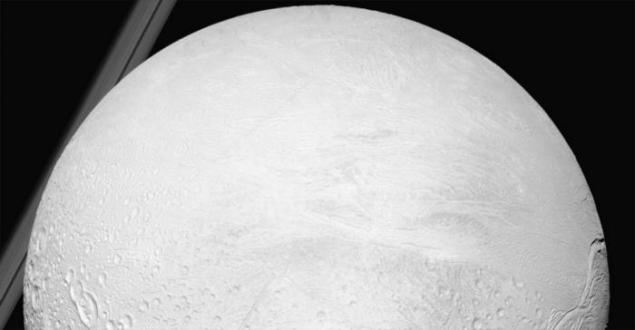
Icy moon Enceladus Saturn with the rings of the planet in the background. (NASA / JPL / Space Science Institute)

Saturn's moon Titan and Enceladus pass rings and the bottom surface of the planet on May 21. (NASA / JPL / Space Science Institute)
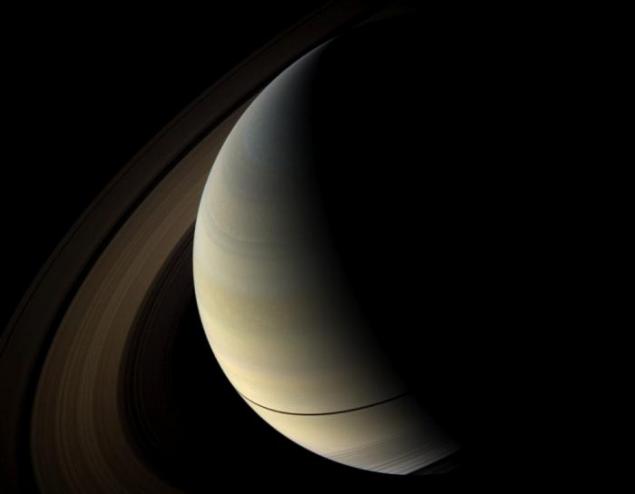
Shadows of Saturn's rings on the surface seem to be thin strips. Picture taken almost equinox in August 2009. (NASA / JPL / Space Science Institute)

Solar Dynamics Observatory, NASA took this picture of the moon, the sun passing by May 3rd. (NASA / GSFC / SDO)

Detailed view of the surface of the sun. Part of a large spot in the active region 10030 imprinted July 15, 2002 by a Swedish Telescope in La Palma. The width of the cells at the top of the picture - about a thousand kilometers. The central part of the spot (umbra) dark because the strong magnetic fields here stop the rise of the hot gas inside. Filamentous education around umber up penumbra. Dark nucleus are clearly visible in some bright fibers. (Royal Swedish Academy of Sciences)

October 6, 2008 the spacecraft NASA «MESSENGER» successfully completed its second flight around Mercury. The next day, pictures taken during the flight, came to Earth. This amazing photo was the first, it was made 90 minutes after the ship crept to the planet in the near distance. Bright crater south of the center - Kuiper present in the photographs station «Mariner 10" in the 1970s. (NASA / Johns Hopkins University Applied Physics Laboratory / Carnegie Institution of Washington)

Mosaic Spitteler craters on Mercury and Hallberg on 30 March. (NASA / Johns Hopkins University Applied Physics Laboratory / Carnegie Institution of Washington)

South Pole and the boundary of light and shadow on Mercury with a height of 10 240 km. The surface temperature at the top of the image, bask in the sun, about 430 degrees Celsius. At the bottom of the dark parts of the picture the temperature drops rapidly to 163 degrees, and some parts of the world the sun's rays do not fall ever, so that the temperature is kept there to -90 degrees. (NASA / Johns Hopkins University Applied Physics Laboratory / Carnegie Institution of Washington)

The second planet from the Sun, Venus. The picture taken on June 5, 2007. Thick clouds of sulfuric acid fouled surface of the planet by reflecting sunlight into space, but retaining the warmth of 460 ° C. (NASA / Johns Hopkins University Applied Physics Laboratory / Carnegie Institution of Washington)

This picture was taken Lunokhod NASA crater Aitken, including its central peak and the northern wall. The width of the surface of the picture - about 30 kilometers. (NASA / GSFC / Arizona State University)

Flex zakraternyh emissions unnamed crater radius of 1 km on the moon. (NASA / GSFC / Arizona State University)

Landing ship "Apollo 14". Traces left by NASA astronauts 5 and 6 February 1971 are still visible. (NASA / GSFC / Arizona State University)

This detailed view of our planet was created mainly from observations of Terra satellite. The picture is focused on the Pacific Ocean, an important part of the water system, which occupies 75% of the surface of our planet. (NASA / Robert Simmon and Marit Jentoft-Nilsen, based on MODIS data)

The image of the moon, curved layers of the atmosphere. Picture taken by astronauts on the ISS over the Indian Ocean on April 17. (NASA)

Panorama of the central part of South America. (NASA)

October 28, 2010, astronauts on the ISS took this picture of the Earth with night brightly lit Brussels, Paris and Milan. (NASA)

Snowfall over 30 US states in February last year - from the Great Plains to New England. (NOAA / NASA GOES Project)

The first quarter of the moon and the northern lights above the Earth September 14, 2010. (NASA)

South Georgia - an arched island, which lies 2,000 kilometers to the east of the southern end of South America. Along the east coast of the continent Neumayer Glacier snake stretches to the ocean. Picture taken January 4, 2009. (NASA EO-1 team)

This photograph was taken by James Spann Poker Flats, Alaska, where he arrived at a scientific conference on the study of the aurora borealis, March 1. (NASA / GSFC / James Spann)

ISS astronauts so greet the dawn. (NASA)

Amazing double crater with a common boundary sediments and lava. Apparently, these two craters were formed at the same time. The photo was taken on Mars using the camera on the rover in February this year. (NASA / JPL / University of Arizona)

Education in the sand on the surface of Mars crater Sinus Sabeus. Picture taken on April 1st. (NASA / JPL / University of Arizona)

This picture was taken the camera rover «Opportunity», «seated on the threshold" on the edge of the crater of Santa Maria (a dark spot at the top left). Traces «Opportunity», leading to the right, you can see in the center. The photo was taken on March 1 after «Opportunity» few days exploring the area. (NASA / JPL / University of Arizona)

Rover «Opportunity» «looks" on the surface of Mars. Somewhere in the distance you can see a small crater. (NASA / JPL)

Holden crater area - one of the four candidates for the landing of the rover «Curiosity», January 4, 2011. NASA still mulling landing their next Mars rover, scheduled for November 25. Mars rover to land on Mars August 6, 2012. (NASA / JPL / University of Arizona)

Rover "Spirit" in the place where he was seen for the last time. He got stuck in the sand in the sun. For the past year, his radio stopped working, and last Wednesday NASA engineers sent the last signal, hoping to get an answer. They did not get it. (NASA / JPL / University of Arizona)

Hartley November 24, 2010. (NASA / JPL-Caltech / UMD)

First, the raw asteroid Vesta shot, make the ship NASA «Dawn». The picture was taken on May 3 at a distance of about 1 million miles. Vesta in white glow in the center of the image. Huge asteroid reflects so much sun that its size seems much more. Vesta is 530 km in diameter, it is the second most massive object in the asteroid belt. Approximation of the ship to the asteroid is expected July 16, 2011. (NASA / JPL)

Picture of Jupiter, made a telescope "Hubble" July 23, 2009, after an asteroid or comet entered the planet's atmosphere and disintegrated. (NASA, ESA, Space Telescope Science Institute, Jupiter Impact Team)

Image of Saturn made "Cassini" on 25 April. On it you can see a number of satellites along the rings. (NASA / JPL / Space Science Institute)

Detailed view of the small moon of Saturn Helen during flight "Cassini" past the planet on May 3. The atmosphere of Saturn occupies the background image. (NASA / JPL / Space Science Institute)

Ice particles ejected from the cracks in the south of Saturn's moon Enceladus August 13, 2010. (NASA / JPL / Space Science Institute)

Vertical formation on the main rings of Saturn rise sharply from the edge of the ring, casting long shadows on the ring. Picture taken ship "Cassini" two weeks before the equinox in August 2009. (NASA / JPL / Space Science Institute)

"Cassini" looks at the dark side of Saturn's largest moon. Oreolopodobnoe ring is formed by sunlight on the periphery of Titan's atmosphere. (NASA / JPL / Space Science Institute)

Icy moon Enceladus Saturn with the rings of the planet in the background. (NASA / JPL / Space Science Institute)

Saturn's moon Titan and Enceladus pass rings and the bottom surface of the planet on May 21. (NASA / JPL / Space Science Institute)

Shadows of Saturn's rings on the surface seem to be thin strips. Picture taken almost equinox in August 2009. (NASA / JPL / Space Science Institute)

